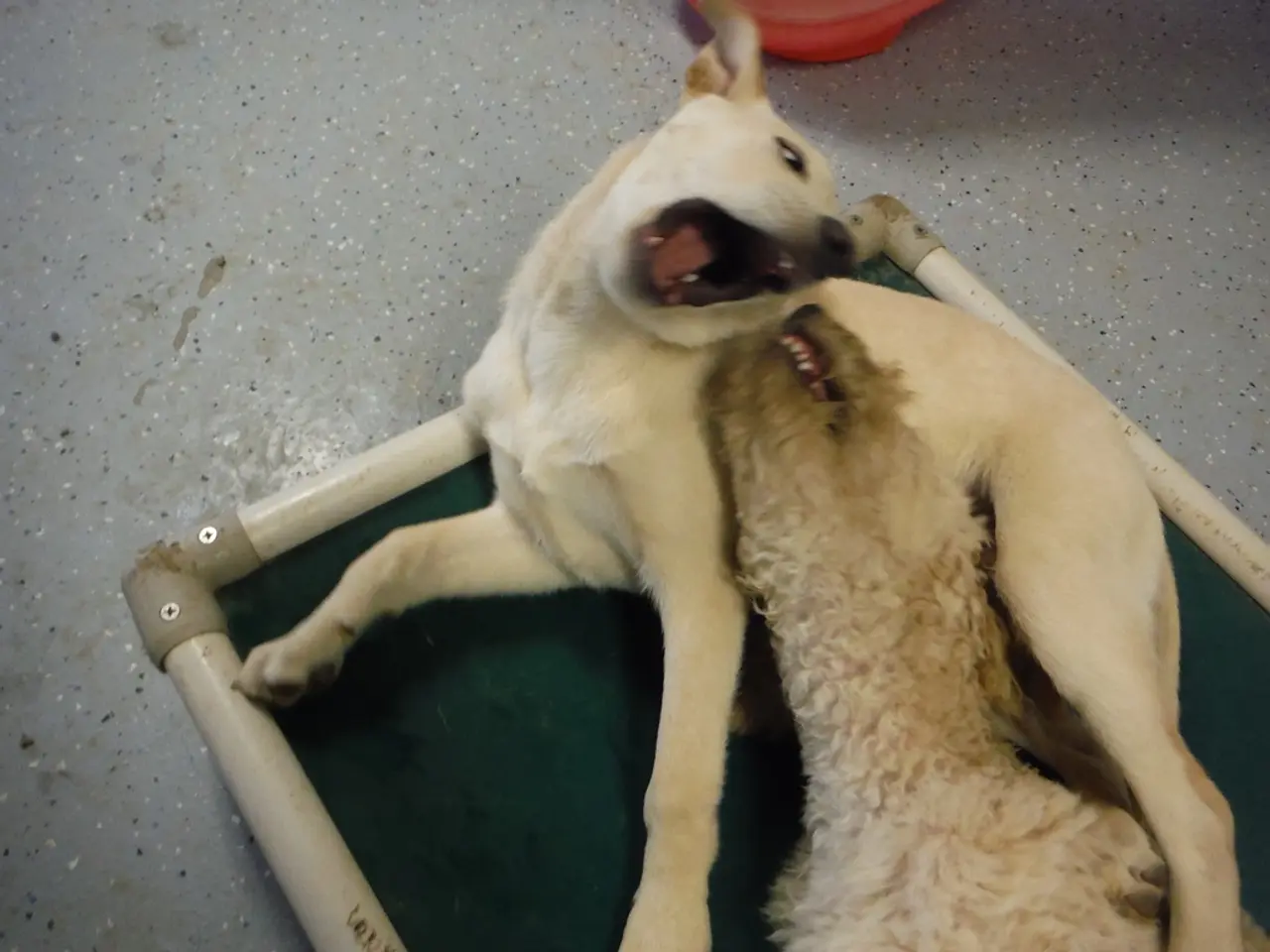Breeds of dogs most commonly afflicted by separation anxiety
Dogs, often referred to as man's best friend, offer unconditional love and companionship. However, some breeds struggle more than others with separation anxiety when their owners are away. Let's explore various dog breeds and their tendencies towards anxiety symptoms.
Breeds Prone to Anxiety Symptoms
- Dalmatians, bred for companionship, may resort to destructive behaviors or trying to escape when left alone.
- Boxers thrive on human company and can develop problematic habits such as chewing furniture and nuisance barking if left alone or bored.
- Beagles, bred as pack dogs, don't always cope well with long periods of isolation and can feel stressed, responding with anxiety symptoms.
- The Australian Shepherd Dog is a highly active breed that can become bored and develop problematic habits when left alone.
- German Shepherds need a physically and mentally stimulating environment and can be prone to distress if they are left alone or not adequately exercised and stimulated.
- Pekingese ideally would have someone around all day long to keep them company, as they don't respond well to being left alone for long periods.
- Pugs are more likely to suffer anxiety symptoms when their owners are out if not managed appropriately from a young age.
- Cocker Spaniels are prone to anxiety symptoms if left alone.
- Chihuahuas are prone to anxiety symptoms and let the neighbors know about their misery by whining.
- Havanese love to be close to their human family and don't like to be left alone.
- Bichon Frises thrive when they are with humans and can quickly become bored and suffer anxiety symptoms if left to fend for themselves for too long.
- Yorkshire Terriers are known for forming strong attachments with their owners, which can cause stress and anxiety symptoms when separated.
- Cockapoos, often considered a 'clingy' dog, are prone to whining when alone due to their high sociability and intelligence.
- Vizslas, bred to hunt alongside people, can be prone to anxiety symptoms when left alone.
- Malteses, bred as a companion, can be anxious when left all alone.
- Poodles crave attention and human company and can get quite distressed when they don't get it.
- Boston Terriers, an ideal apartment dog, may struggle with loneliness and be more likely to develop anxiety symptoms.
- Havanese dogs are more prone to anxiety symptoms than other breeds because they form very strong bonds with their owners, have a sensitive and dependent temperament, and do not cope well with being left alone.
- Siberian Huskies have high physical energy demands and don't handle being left alone with nothing to do.
- Italian Greyhounds are more likely to suffer anxiety symptoms than their larger cousins, the Greyhound.
- French Bulldogs, being 'people-dogs', don't handle long absences too well.
- Border Collies are more likely than other breeds to become bored when they have no stimulation, leading to anxiety symptoms and destructive behavior.
- Jack Russells need a human around to engage them and keep them out of mischief.
- Miniature Schnauzers thrive on human company and can become anxious if left alone for long periods without adequate training.
- German Shorthaired Pointers want to work hard with a human at their side and can whine and resort to destructive behavior out of anxiety symptoms when left alone.
- Whippets dislike being left by themselves and can get stressed very quickly when left alone.
- Golden retrievers can struggle if they are left alone for long periods as they form strong bonds with their owner.
- Cavalier King Charles Spaniels typically don't react well to being left alone for long periods.
- Shetland Sheepdogs require plenty of daily physical activity and can become stressed if they are frustrated and bored, leading to anxiety symptoms when left alone.
Causes and Solutions
Anxiety symptoms and general neediness are often related to nurture rather than nature. Individual temperament, early experiences, and the owner's lifestyle play significant roles in a dog's behavior. If a traumatic event such as a thunderstorm happens when the owner is absent, this can cause anxiety symptoms as the dog associates being alone, with no one to reassure them, with terrifying events.
Good training, socialization, and providing mental and physical stimulation can help reduce anxiety symptoms in dogs. It's important to ensure your dog has a safe and comfortable environment when you're away, such as a dog-proofed room or a secure outdoor space. Gradually increasing the time you spend away from your dog, with positive reinforcement, can also help them adjust.
Remember, every dog is unique, and while some breeds may be more prone to anxiety symptoms, it's crucial to understand your individual pet's needs and behaviors to provide them with the best care possible.
Read also:
- Abu Dhabi initiative for comprehensive genetic screening, aiming to diagnose over 800 conditions and enhance the health of future generations in the UAE.
- Elderly shingles: Recognizing symptoms, potential problems, and available treatments
- Protecting Your Auditory Health: 6 Strategies to Minimize Noise Damage
- Exploring the Reasons, Purposes, and Enigmas of Hiccups: Delving into Their Origins, Roles, and Unsolved Aspects





